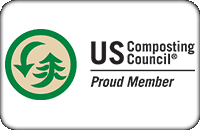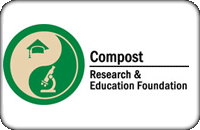We often get questions about backyard composting from people who want to recycle their organics at home. If you have the space and the desire, you too can make high quality, natural compost. The process is simple!
Many state universities focused on agriculture promote compost education and home composting techniques through cooperative extensions. The Cornell Waste Management Institute produced a helpful guide to home composting and there are even great books to introduce children to the world of composting.
Composting your organics at home has many great benefits, including the reduction of methane emissions at landfills, reducing truck traffic needed to transport waste, and creating a nutrient-rich soil amendment for gardening and lawn care! In our experience, informed by decades of research, there are three keys to successful composting at home:
- Using a containment system that allows air flow, which helps manage moisture and aids the composting process. These can be achieved by keeping a composting system off the ground or using chicken wire to contain the materials rather than a solid barrier.
- Ensure your compost includes the right mix of ‘browns’ and ‘greens,’ ideally in a 3 to 1 ratio. ‘Browns,’ like leaves, natural mulch, straw, sawdust, or shredded paper, are an excellent source of carbon for your compost, while ‘greens,’ like grass and food scraps, provide the necessary nitrogen content.
- Make your compost pile as big as possible. You will need to build up critical mass before active composting can occur. Compost piles that are too small to shed water or increase their internal temperature will not break down properly. Remember: patience and pile size!
Composting is a beneficial process that creates a useful, versatile product. Here at Naturcycle, we love compost and use it every day, whether it is made at home or at one of our partner facilities throughout the Northeast. Start home composting today!





